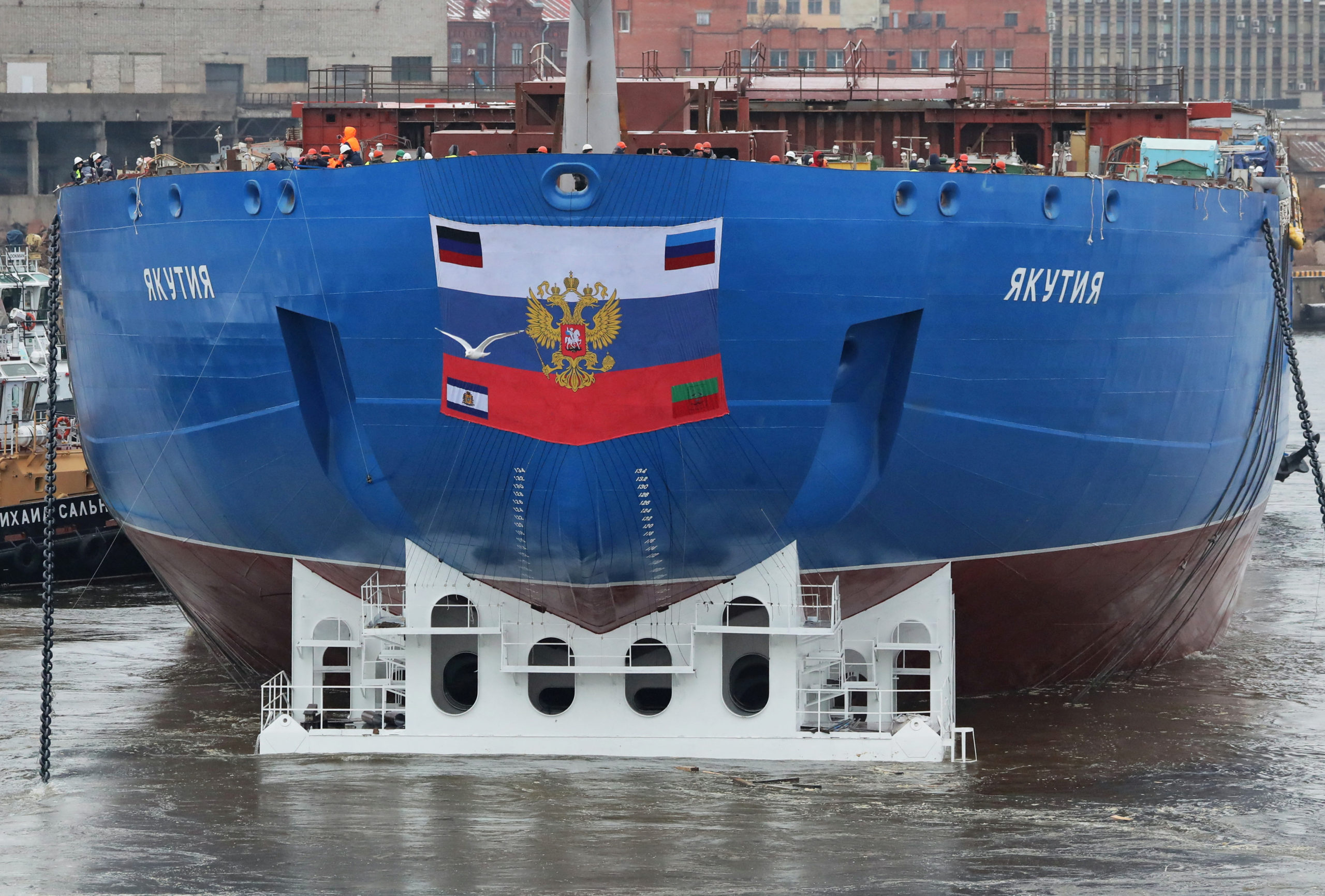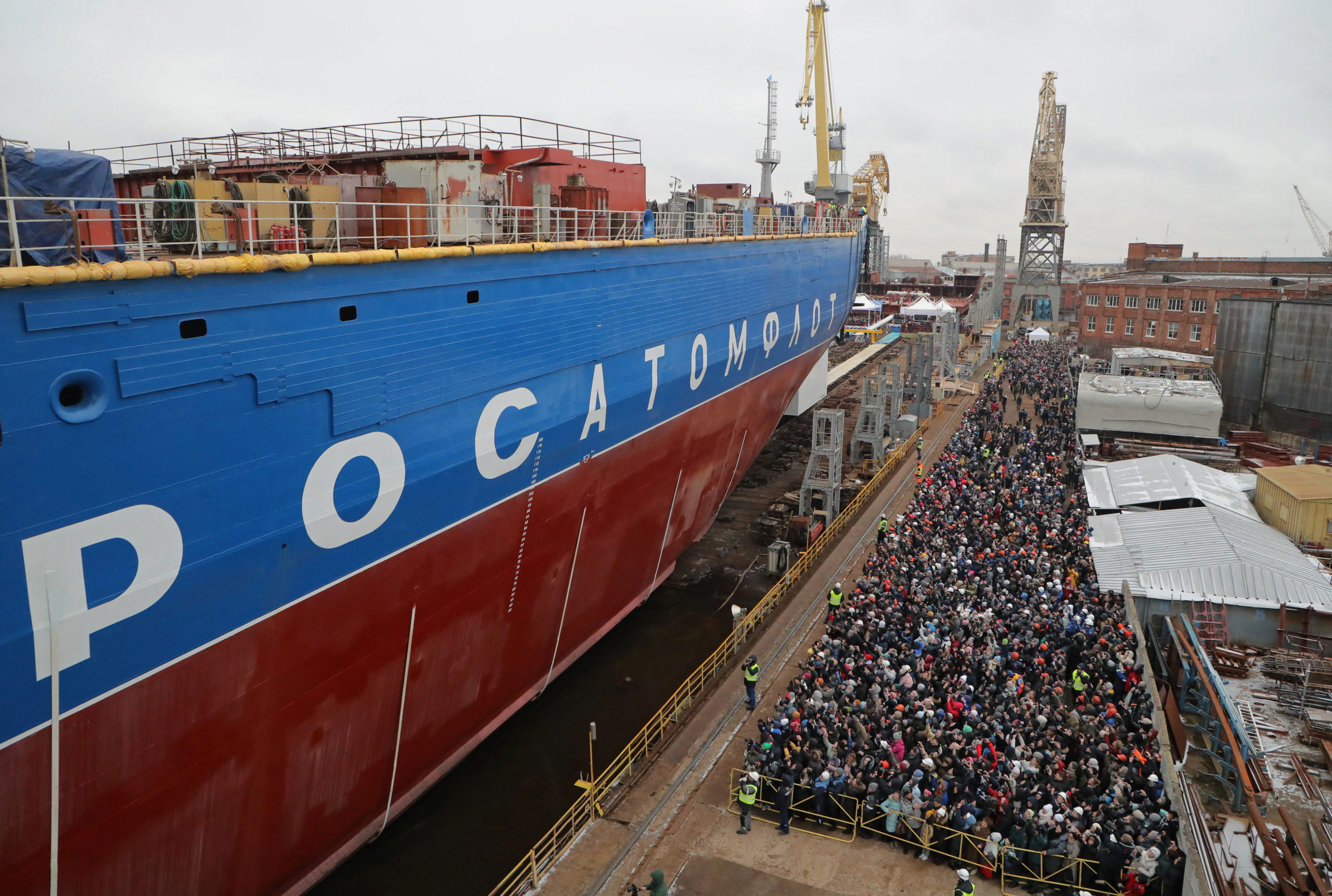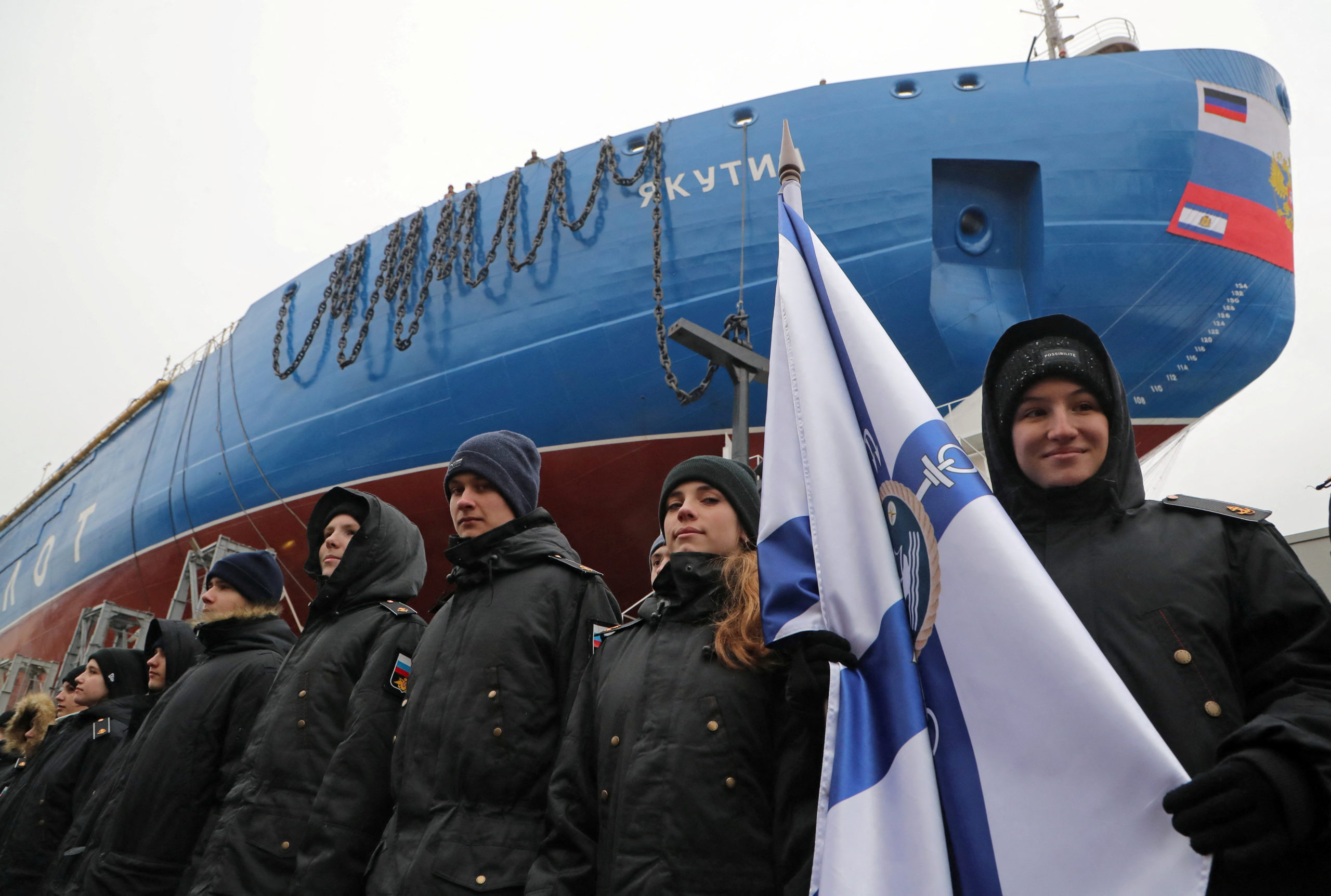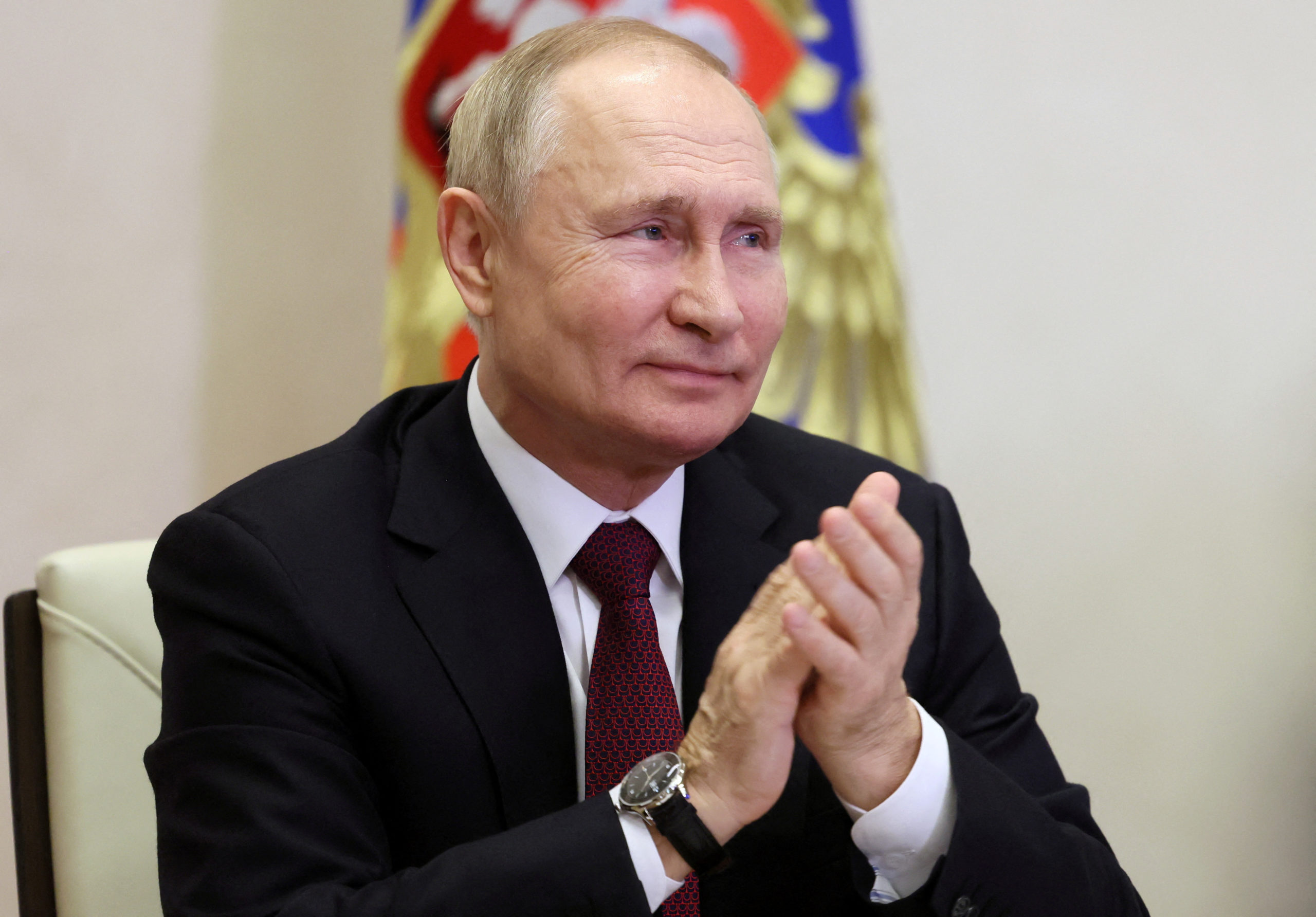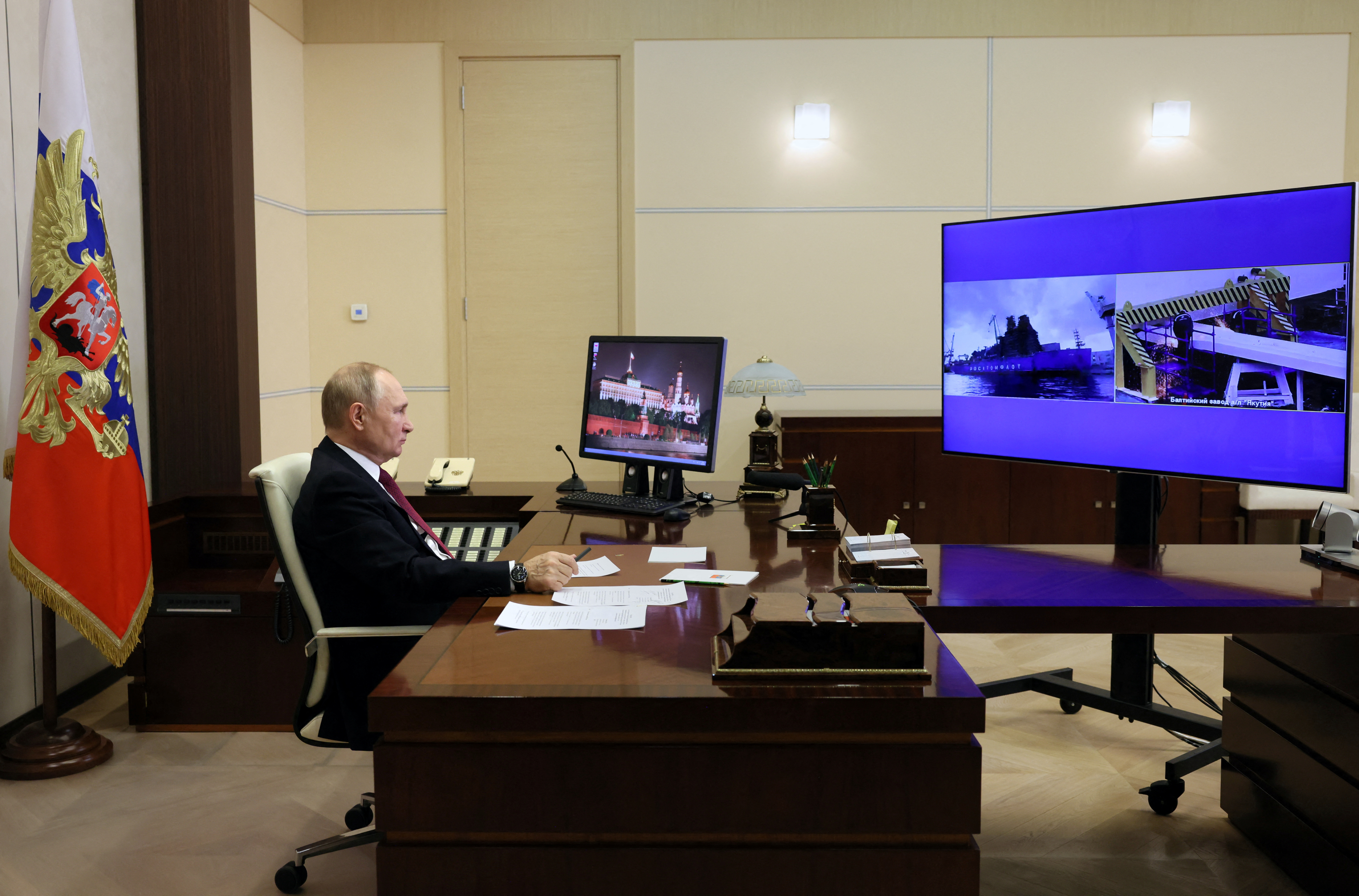Putin touts Russia’s ‘Arctic power’ with launch of nuclear icebreakers
Putin said such icebreakers were of strategic importance for the country.
ST. PETERSBURG, Russia — President Vladimir Putin on Tuesday touted Russia’s Arctic power at a flag-raising ceremony and dock launch for two nuclear-powered icebreakers intended to ensure year-round navigation in the Western Arctic.
Presiding via video link from the Kremlin at the launch ceremony in the former imperial capital of St. Petersburg in northern Russia, Putin said such icebreakers were of strategic importance for the country.
“Both icebreakers were laid down as part of a large serial project and are part of our large-scale, systematic work to re-equip and replenish the domestic icebreaker fleet, to strengthen Russia’s status as a great Arctic power,” Putin said.
The Arctic is taking on greater strategic significance due to climate change, as a shrinking ice cap opens up new sea lanes. Vast oil and gas resources lie in Russia’s Arctic regions, including a liquefied natural gas plant on the Yamal Peninsula.
Putin smiled as the Yakutia nuclear icebreaker was launched into the water in the docks and stood as the Russian national anthem graced the raising of the Russian flag on the Ural icebreaker which will begin work in December.
The 173.3-meter (569-feet) Yakutia, with a displacement of up to 33,540 tonnes, can smash through ice of up to three meters. It will enter service in 2024.
Two other icebreakers in the same series, the Arktika and the Sibir, are already in service, and another, the Chukotka, is scheduled for 2026.
Putin said a super-powerful nuclear 209-meter icebreaker known as “Rossiya,” with a displacement of up to 71,380 tonnes, would be completed by 2027. It will be able to break through ice 4 meters thick.
“They are needed for the study and development of the Arctic, to ensure safe, sustainable navigation in this region, to increase traffic along the Northern Sea Route,” Putin said.
“The development of this most important transport corridor will allow Russia to more fully unlock its export potential and establish efficient logistics routes, including to Southeast Asia.”
[NATO allies take bigger steps to counter Russian military force in the Arctic]
Putin, who came to power in 1999 promising to end the chaos triggered by the collapse of the Soviet Union, has quietly strengthened Russia’s presence in the Arctic, where Russia has more than 24,000 kilometers (15,000 miles) of coastline stretching from the Barents Sea to the Sea of Okhotsk.
Since 2005, Russia has reopened tens of Arctic Soviet-era military bases, modernized its navy, and developed new hypersonic missiles designed to evade U.S. sensors and defenses.
Arctic experts say it would take the West at least 10 years to catch up with Russia’s military in the region, if it chose to do so.
Reporting by Reuters.
This article has been fact-checked by Arctic Today and Polar Research and Policy Initiative, with the support of the EMIF managed by the Calouste Gulbenkian Foundation.
Disclaimer: The sole responsibility for any content supported by the European Media and Information Fund lies with the author(s) and it may not necessarily reflect the positions of the EMIF and the Fund Partners, the Calouste Gulbenkian Foundation and the European University Institute.
